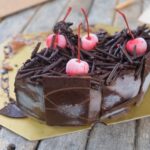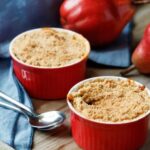Are you looking to add a touch of elegance and beauty to your cakes? Learn how to decorate cake with artificial flowers for a stunning and unique look.
The trend of using artificial flowers in cake decorating has been growing in popularity, as it offers a simple yet striking way to enhance the appearance of any dessert. Whether you’re a professional baker or just someone who enjoys baking as a hobby, incorporating artificial flowers into your cake designs can elevate your creations to the next level.
When it comes to decorating cakes with artificial flowers, there are various factors to consider. From choosing the right type of flowers to ensuring proper placement and storage, this article will guide you through each step of the process. Furthermore, we’ll provide expert tips on how to seamlessly integrate artificial blooms into different cake styles and designs, allowing for endless creativity and versatility in your decorative endeavors.
In this comprehensive guide, we will cover everything from selecting the most suitable artificial flowers for cake decorating to exploring alternative decorative options. Additionally, safety precautions and considerations when using artificial flowers on cakes will be discussed, ensuring that you can adorn your confections safely and responsibly. Whether you’re planning a special occasion or simply want to elevate your baking skills, learning how to decorate cake with artificial flowers is an invaluable addition to any baker’s repertoire.
Choosing the Right Artificial Flowers for Cake Decorating
When it comes to decorating cakes with artificial flowers, choosing the right flowers is essential to ensure a beautiful and safe end result. Here are some tips for selecting the perfect artificial flowers for cake decorating:
1. Consider the size and scale: It’s important to choose artificial flowers that are proportionate to the size of the cake. Larger cakes can accommodate bigger blooms, while smaller cakes may require more delicate flowers.
2. Opt for food-safe options: Look for artificial flowers that are specifically designated as food-safe. These flowers are typically made with materials that are non-toxic and safe for contact with food, ensuring that they can be used on edible creations without any health concerns.
3. Choose colors wisely: When selecting artificial flowers for cake decorating, consider the color scheme of the cake and the overall design aesthetic. Coordinate the colors of the flowers with the frosting and decorations to create a cohesive and visually appealing look.
4. Select durable materials: Since artificial flowers will be in direct contact with the cake, it’s important to choose flowers made from durable materials that can withstand being inserted into the frosting without wilting or losing their shape.
By keeping these factors in mind, you can choose artificial flowers that not only enhance the visual appeal of your cake but also meet safety standards for use on edible creations.
Preparing the Cake for Artificial Flowers
Smooth Icing
Before adding artificial flowers to a cake, it is important to ensure that the surface is smooth and flat. This can be achieved through proper icing techniques, such as using a spatula or icing smoother to create an even layer of frosting. Any bumps or imperfections on the cake’s surface can affect how the artificial flowers are placed and how they adhere to the cake.
Frosting Consistency
The consistency of the frosting or buttercream used on the cake can also impact how well artificial flowers stay in place. It is essential to use a firm and stable frosting that will hold the weight of the flowers without sagging or sliding off. If the frosting is too soft, it may not provide enough support for the flowers, leading to potential mishaps during decorating or serving.
Chilling the Cake
Another useful tip for preparing a cake for artificial flower decoration is to chill the cake before placing the flowers. Chilling helps to set and firm up the frosting, making it easier to work with when arranging and securing the flowers. Additionally, a chilled cake provides a more stable base for inserting floral picks or stems into the icing.
Floral Picks
To securely attach artificial flowers to a cake, floral picks are often used. Before inserting them into the cake, make sure they are clean and food-safe. Simply insert each pick into the stem of an artificial flower and then gently push it into the cake at your preferred angle and position. Be mindful of where you place each flower so they enhance rather than overpower your overall design.
Step-by-Step Guide to Arranging and Decorating the Cake With Artificial Flowers
Decorating a cake with artificial flowers can add a touch of elegance and beauty to any special occasion. Whether it’s a wedding, birthday, or anniversary, using artificial flowers can elevate the look of your cake and create a stunning centerpiece for your celebration. Here is a step-by-step guide to help you arrange and decorate your cake with artificial flowers:
1. Prepare the cake: Start by preparing the cake for decoration. Make sure the cake has been properly baked, cooled, and frosted before adding the artificial flowers.
2. Choose the right placement: Determine where you want to place the artificial flowers on the cake. Consider whether you want to cover the entire cake or create a specific arrangement on top.
3. Select the right size and type of flowers: When choosing artificial flowers for cake decoration, consider the size and style of the flowers in relation to the size of your cake. Opt for smaller blooms for smaller cakes and larger blooms for bigger cakes.
4. Arrange the flowers: Once you have selected your artificial flowers, carefully arrange them on top of the cake. You can create a cascading effect, place them in a circular pattern, or simply adorn one corner of the cake.
5. Secure the flowers: To ensure that the artificial flowers stay in place, gently push each stem into the frosting of the cake. Be mindful not to overcrowd the arrangement and keep it balanced.
6. Add finishing touches: Once all of your artificial flowers are in place, step back and assess if any additional decorations are needed such as edible pearls or leaves to enhance the overall look.
By following this step-by-step guide, you can easily achieve a beautifully decorated cake with artificial flowers that will impress your guests and make your celebration even more special.
Incorporating Artificial Flowers Into Different Cake Styles and Designs
Artificial flowers can be incorporated into a wide variety of cake styles and designs, adding a touch of elegance and beauty to any confection. Whether you are decorating a classic wedding cake, a whimsical birthday cake, or an elegant anniversary cake, artificial flowers can enhance the overall look and feel of the dessert.
One popular way to incorporate artificial flowers is by creating cascading floral arrangements that flow down the side of the cake, adding a sense of movement and grace.
For rustic-themed cakes, consider using wildflowers or earthy-toned artificial blooms to create a natural, organic look. These types of flowers can be arranged in a more casual style, with some blooms spilling onto the cake stand for added effect. On the other hand, more formal cakes, such as those for high-end events or black-tie affairs, may benefit from using delicate and sophisticated artificial flowers like roses or peonies to achieve a polished and refined aesthetic.
In addition to traditional tiered cakes, artificial flowers can also be used to adorn single-tier or even cupcake-style cakes. For smaller desserts, consider using miniaturized artificial flowers to maintain proportionality with the size of the confection. No matter the style or design of the cake, incorporating artificial flowers allows for endless creative possibilities and customization.
Tips for Storing and Preserving Cakes Decorated With Artificial Flowers
Storing and preserving cakes decorated with artificial flowers is essential to ensure that the cake remains visually appealing and safe for consumption. Here are some tips to help you maintain the beauty and quality of your decorated cake:
Refrigeration
After decorating a cake with artificial flowers, it is important to store it properly. If the cake has a perishable filling or frosting, it should be refrigerated. However, keep in mind that refrigeration can affect the appearance of the artificial flowers, particularly if they are made of delicate materials such as silk. To prevent any damage, place the cake in an airtight container before refrigerating.
Avoiding Direct Sunlight
Artificial flowers on cakes can fade when exposed to direct sunlight for extended periods. In order to preserve their color and appearance, it is crucial to store the decorated cake away from sunlight or harsh lighting. Choose a cool, dark place for storage to maintain the vibrancy of the artificial flowers.
Proper Handling
When storing a decorated cake with artificial flowers, it’s important to handle it with care. Avoid placing heavy items on top of the cake or handling it roughly, as this can damage both the flowers and the overall design. Additionally, be mindful of any protruding flower stems when covering or wrapping the cake for storage.
By following these guidelines for storing and preserving cakes adorned with artificial flowers, you can ensure that your beautifully decorated creation remains fresh and visually stunning for as long as possible. Taking proper care of a cake embellished with artificial flowers will also help maintain its safety for consumption.
Safety Precautions and Considerations When Using Artificial Flowers on Cakes
Artificial flowers are a beautiful and versatile way to decorate cakes, but it’s important to take safety precautions and considerations when using them. While they may look visually stunning, there are certain factors that need to be taken into account to ensure that the cake is safe for consumption.
First and foremost, it is crucial to choose artificial flowers that are specifically made for use in food decoration. These flowers should be labeled as non-toxic and safe for contact with food. It’s essential to avoid using any artificial flowers that are intended for other purposes, such as crafting or home decor, as they may contain chemicals or materials that are not safe for consumption.
In addition, it’s important to create a barrier between the artificial flowers and the actual cake. This can be done by placing a piece of parchment paper or plastic wrap on the surface of the cake before arranging the flowers on top. This will prevent any direct contact between the artificial flowers and the edible part of the cake, ensuring that they do not contaminate the cake with any non-edible substances.
It’s also crucial to communicate with the consumers about the presence of artificial flowers on the cake. Some individuals may have allergies or sensitivities to certain materials used in artificial flowers, so it’s important to make sure that everyone consuming the cake is aware of their presence. Providing a list of ingredients used in creating the artificial flowers can also be helpful for those with specific dietary restrictions or concerns.
| Artificial Flower Safety Tips | Explanation |
|---|---|
| Choose Non-Toxic Flowers | Select artificial flowers labeled as non-toxic and food-safe. |
| Use a Barrier | Place parchment paper or plastic wrap on the cake before adding artificial blooms. |
| Communicate with Consumers | Inform consumers about the presence of artificial flowers and provide ingredient lists if needed. |
Alternatives to Artificial Flowers for Cake Decorating
Choosing the right decorations for cake decorating is crucial in creating a visually stunning and appetizing dessert. While artificial flowers are a popular choice, there are also other decorative options that can make your cake stand out. One alternative to artificial flowers is using edible flowers, such as roses, violets, or pansies. These delicate blooms not only add a pop of color to your cake but also provide a unique and natural touch that complements the taste of your dessert.
Another alternative to artificial flowers is using fresh fruit or berries as decorations. Not only do they add vibrant colors to your cake, but they also provide a refreshing and tangy flavor that enhances the overall taste experience. From sliced strawberries and kiwi to raspberries and blueberries, the possibilities for fruit decorations are endless. Plus, they add a healthy element to your dessert that may appeal to health-conscious individuals.
For those looking for a more whimsical and playful touch, consider using candy or chocolate decorations. From sprinkles and colorful candies to chocolate shavings and sculpted chocolate pieces, these sweet treats can take your cake decorating to the next level. They can be used to create intricate designs, patterns, or even 3-D elements that will surely impress your guests.
| Decorative Option | Description |
|---|---|
| Edible Flowers | Delicate blooms that add color and natural touch |
| Fresh Fruit or Berries | Vibrant colors and refreshing/tangy flavor |
| Candy or Chocolate Decorations | Sprinkles, colorful candies, chocolate shavings for playful touch |
Conclusion
In conclusion, the use of artificial flowers in cake decoration has become a popular and versatile trend that allows for stunning and unique designs. As discussed in this article, choosing the right artificial flowers, preparing the cake properly, and arranging the flowers with care are essential steps for achieving a beautiful end result. Whether it’s a simple buttercream cake or an elaborate fondant creation, incorporating artificial flowers can elevate the overall aesthetic and make a memorable statement.
It is important to remember that while artificial flowers offer convenience and longevity, proper safety precautions must be taken when using them on cakes. Ensuring that the materials used are food-safe and free from any harmful substances is crucial for both the appearance and integrity of the cake. Additionally, being mindful of potential allergies or sensitivities to certain materials will help in creating a safe and enjoyable experience for all who partake in the cake.
As with any form of artistry, embracing creativity and exploring different options is key to discovering new ways to incorporate artificial flowers into cake decoration. While this article has provided a comprehensive guide to using artificial flowers, it’s worth considering alternative decorative options as well.
Experimenting with fresh flowers, edible decorations, or other non-traditional elements can open up endless possibilities for creating visually stunning and personalized cakes. Ultimately, the beauty and versatility of artificial flowers in cake decoration offer endless opportunities for both professional bakers and home enthusiasts to showcase their creativity and enhance their baking endeavors.
Frequently Asked Questions
How Do You Clean Fake Flowers for a Cake?
Cleaning fake flowers for a cake involves gently wiping them with a soft, dry cloth to remove any dust or debris. If the flowers are particularly dirty, they can be rinsed under cool water and left to air dry before using them on the cake.
It’s important to handle the fake flowers carefully to avoid damaging them during the cleaning process.
How Do You Decorate the Top of a Cake With Flowers?
Decorating the top of a cake with flowers can be done by arranging fresh or fake flowers in a visually appealing way. For fresh flowers, make sure they are food-safe and pesticide-free, then simply insert them into the frosting on top of the cake.
Silk or plastic flowers should be placed on a small piece of parchment paper before being added to the cake to prevent any contact between the artificial materials and the frosting.
What Kind of Flowers Can I Use to Decorate a Cake?
When choosing flowers to decorate a cake, it’s essential to select varieties that are safe for consumption and have not been treated with chemicals. Edible blooms such as roses, violets, pansies, and lavender are popular choices for cake decoration.
If using fake flowers, ensure they are labeled as food-safe and non-toxic before placing them on the cake. It’s best to avoid any potentially toxic or harmful flowers when decorating cakes for consumption.

Welcome to my blog about home and family. This blog is a place where I will share my thoughts, ideas, and experiences related to these important topics. I am a stay-at-home mom with two young children. I hope you enjoy reading it! and may find some helpful tips and ideas that will make your home and family life even better!





